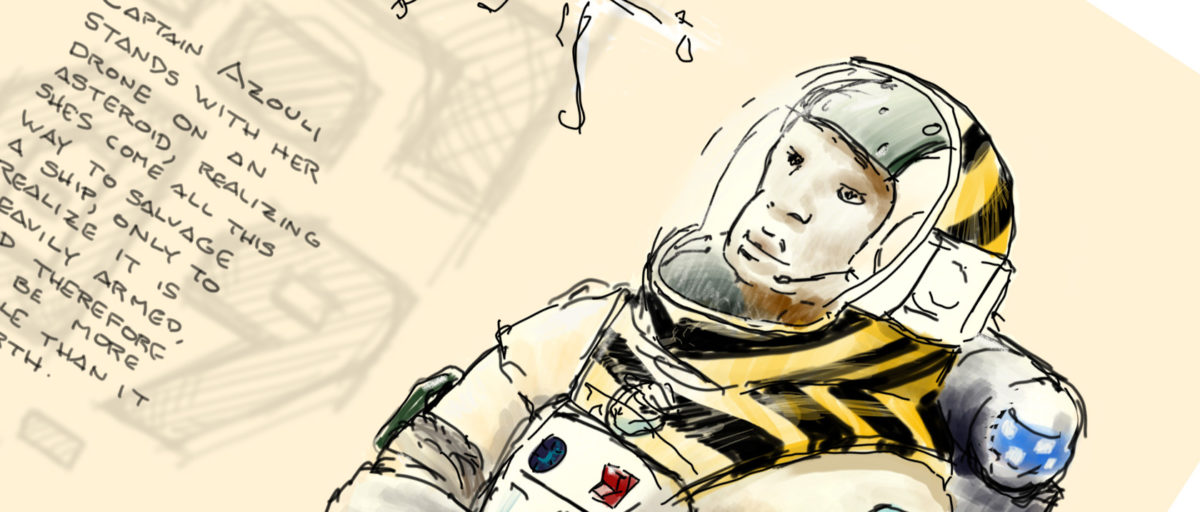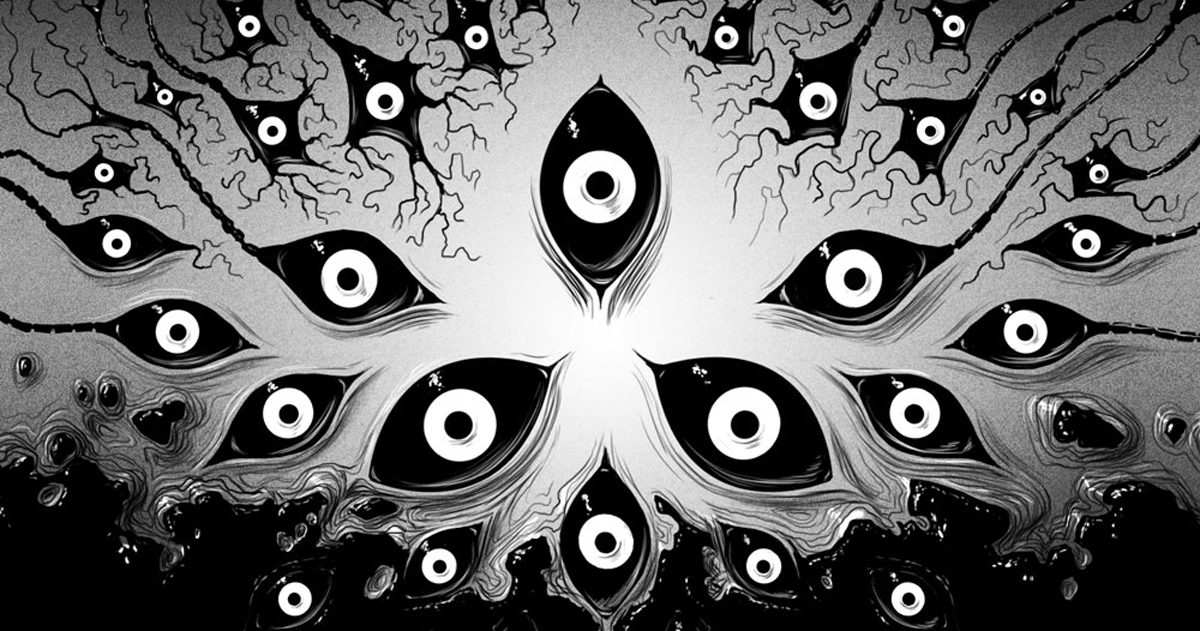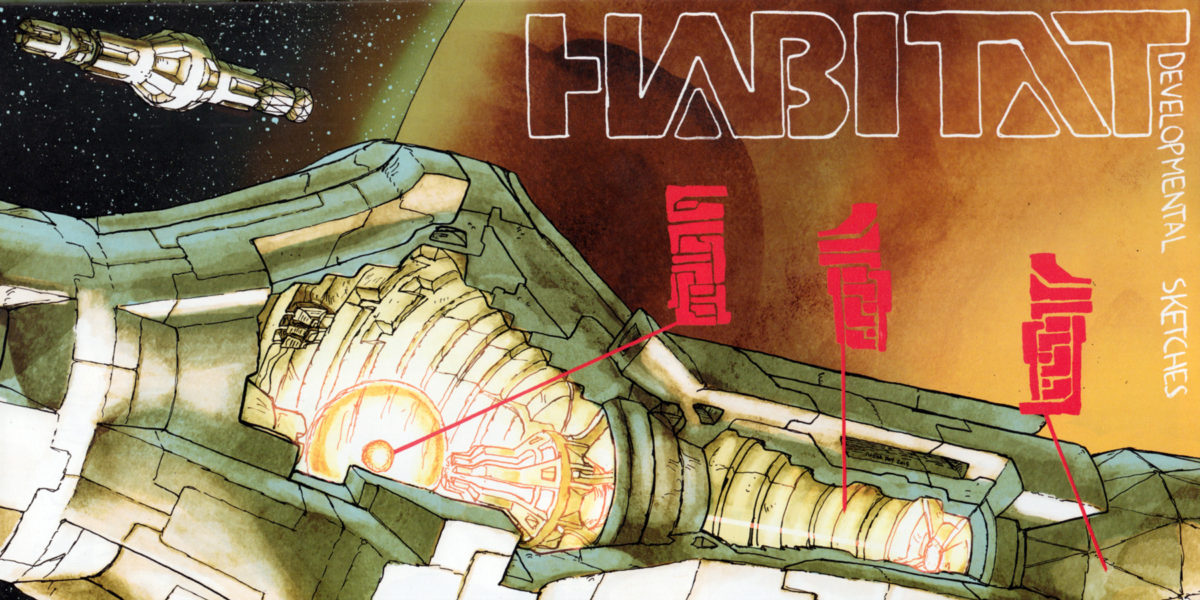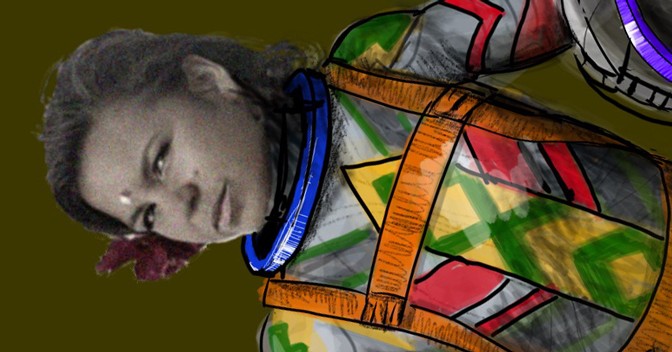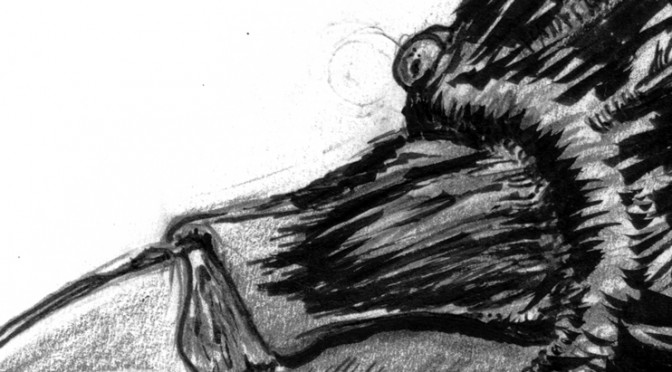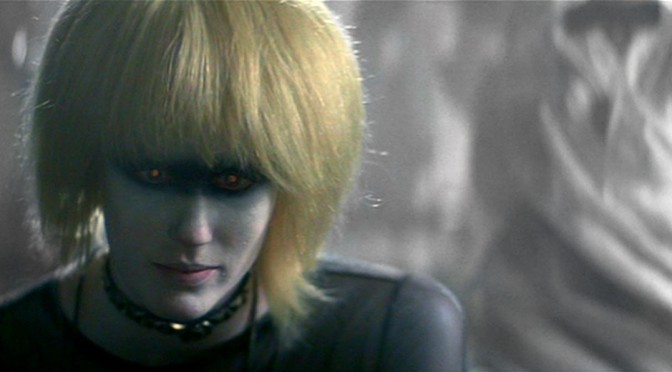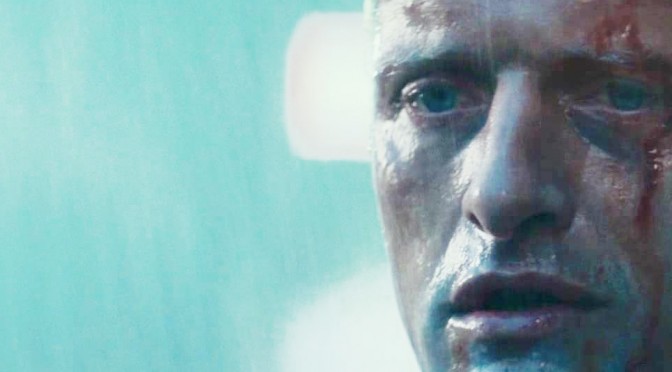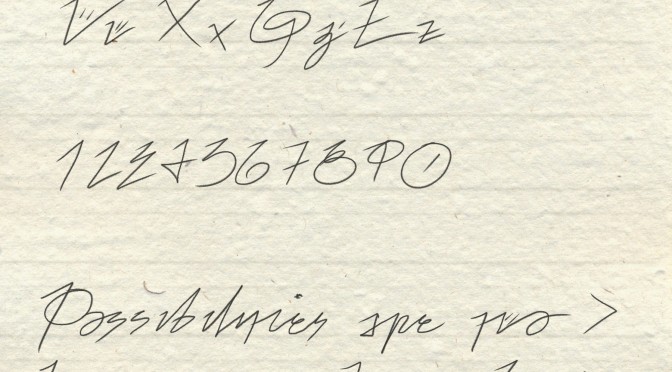It took a long time for Captain Azouli to confirm that this ship was here. Now she maybe wishes she wasn’t.
Continue reading “Captain Azouli”Category: science/fiction
Reaching for Aphelion: an Interview with Gloria Reynolds
Gloria Reynolds is an aerospace engineer and comic artist living in the Pacific Northwest. Her posthuman science fiction comic Aphelion is something I’ve been longing for for years: a comic that stretches the imagination and shows images that are uncomfortably unfamiliar, but with rigorous, naturalistic thought applied to the setting and events. I put it on a very narrow shelf with PLANETES and, frankly, not much else.
Gloria sat down for a couple of hours with me on Skype and we chatted about engineering, science fiction, and creative process.
Continue reading “Reaching for Aphelion: an Interview with Gloria Reynolds”
Escaping The Habitats of Our Own Making: an interview with Simon Roy
Simon Roy’s new comic, Habitat, is, in the best way, horrifying. It connects the greatest taboo among most human cultures — cannibalism — with the sort of quotidian oppression that humans have lived with throughout most of our existence.
Continue reading “Escaping The Habitats of Our Own Making: an interview with Simon Roy”
The Tully Monster is So Weird, It’s Hard to Draw
The Tully Monster, Tullymonstrum gregarium, is an extinct creature from about 300 million years ago (That’s tens of millions of years before there were dinosaurs). It looks like a squid, has a single arm — elbow and all — and has a spinal cord, completely unlike a cephalopod.
It’s insanely weird.
Continue reading “The Tully Monster is So Weird, It’s Hard to Draw”
Tokarahia: a Sleek, Small Ancestor of the Largest Animal in History
The Tokarahia is a small (about 6m long), extinct ancestor of the modern baleen whales. It has a few, probably vestigial, peg teeth in the front of its jaws, but the rest of its mouth was almost certainly filled in with baleen. I love its sleek shape.
Continue reading “Tokarahia: a Sleek, Small Ancestor of the Largest Animal in History”
Captain Radish Saumet’s Spacesuit
We’ve seen Radish Saumet’s spacecraft, Happy Delivery, before! Her spacecraft doesn’t have much of an aesthetic (except for the spraypainted Jolly Roger on the side) because it’s so modular; Radish swaps parts as needed, keeping the ISp and thrust as high as she can afford.
Her spacesuit, on the other hand, is another matter. Over time, she’s swapped dozens of parts in and out to match her tiny frame and her habits. Barring repairs, though, it’s remained the way it is for the last couple of years. Continue reading “Captain Radish Saumet’s Spacesuit”
Corvosapien Physical Sophontology
Corvosapiens (or, as they call themselves, “people”) have a rich and varied physical culture. However, because of their greater mobility than earthbound humans, aesthetic principles and philosophical structures often spread more quickly than they did when primates were the custodians of the civilization meme.
Pris is More Cyborg than Woman
At the beginning of Blade Runner, Captain Bryant tells us that (editing errors aside) four replicants have escaped their restraints and have flown to Earth. The oldest of them is Roy Batty (incept date: January 8, 2016), followed closely by Pris (February 14, 2016). Of the replicants, they’re emotionally closest to each other; where Zhora and Leon seem to be living together as a matter of convenience, Roy and Pris seem to be traveling and living together because they like each other, they miss each other when they’re gone, and they share an objective. But Pris is different from Roy.
The Question Is Not Whether Deckard Is A Replicant, But Whether Roy Is A Person
Blade Runner is a near-perfect vision. What I love most about it is its willingness to embrace the Noir idiom, not just in its visuals, but in the ambivalent moral position of its protagonist, Roy Batty. Continue reading “The Question Is Not Whether Deckard Is A Replicant, But Whether Roy Is A Person”
Steerscript
This is a script derived from something much like the Roman alphabet and used to write an English-like language that has evolved over the course of centuries, separated from any other speakers. There are some distinct features of it; noticeably, the “qu” digraph is extinct, though the various “*h” digraphs remain. You’ll notice also that the x is the familiar one we use as the most basic element of algebra and logic. You’ll also note that several other commonly used Greek letters — rho and phi — are hybridized with their Roman counterparts.
